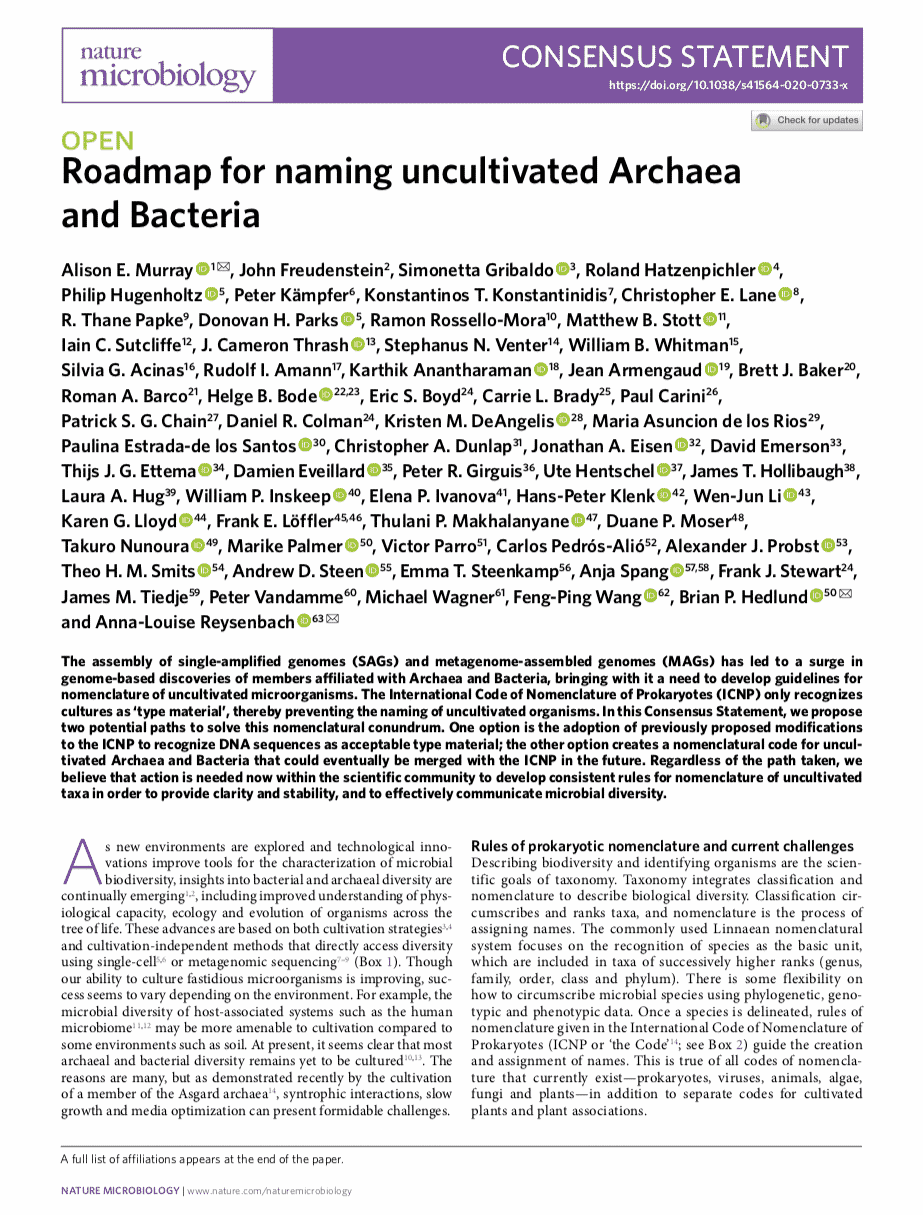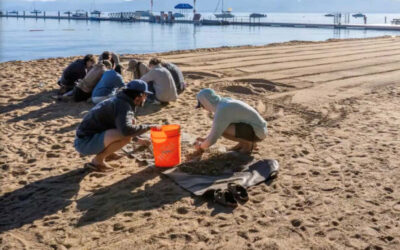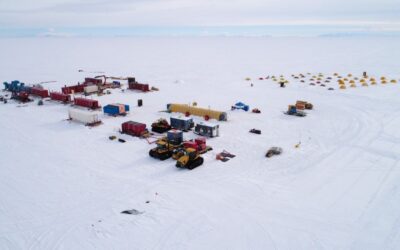International Consortium of Scientists Propose New Naming System for Uncultivated Bacteria and Archaea
RENO, NEV.
JUNE 8, 2020
Microbiology
Nomenclature
Taxonomy
The long-standing rules for assigning scientific names to bacteria and archaea are overdue for an update, according to a new consensus statement backed by 119 microbiologists from around the globe.
Bacteria and archaea (single-celled organisms that lack cell nuclei) make up two of the three domains of life on Earth, and are named according to the International Code of Nomenclature of Prokaryotes (ICNP; the Code). At present, the Code only recognizes species that can be grown from cultures in laboratories – a requirement that has long been problematic for microbiologists who study bacteria and archaea in the wild.
Since the 1980s, microbiologists have used genetic sequencing techniques to sample and study DNA of microorganisms directly from the environment, across diverse habitats ranging from Earth’s icy oceans to deep underground mines to the surface of human skin. For a vast majority of these species, no method yet exists for cultivating them in a laboratory, and thus, according to the Code, they cannot be officially named.
“There has been a surge in recent years in genome-based discoveries for archaea and bacteria collected from the environment, but no system in place to formally name them, which is creating a lot of chaos and confusion in the field,” said Alison Murray, Ph.D., Research Professor of Biology at the Desert Research Institute (DRI) in Reno. “Being able to represent the diversity of uncultivated organisms known by their genome sequences in a common language is incredibly important.”
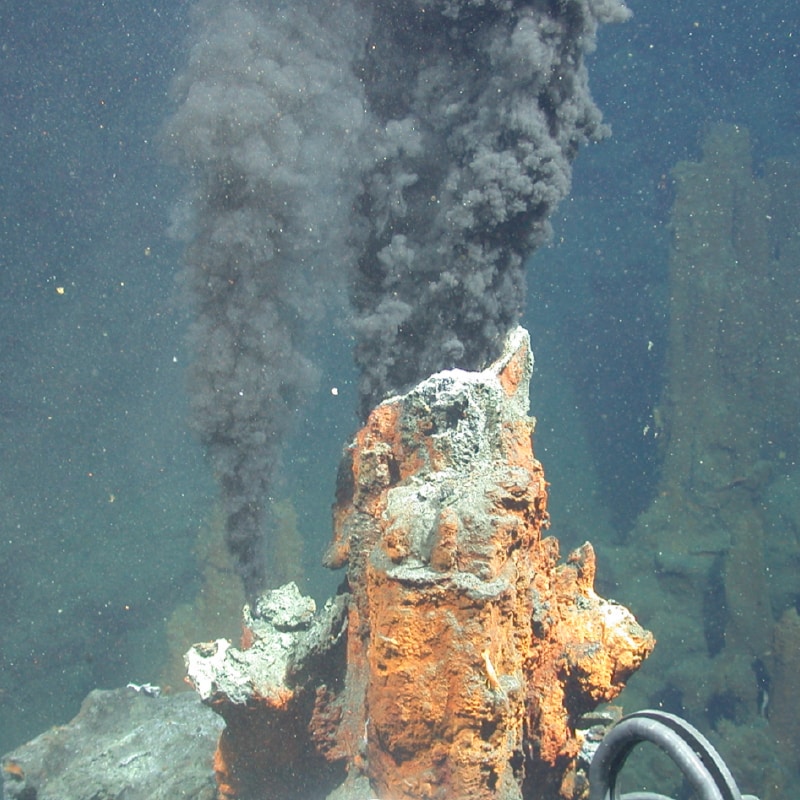
Deep-sea hydrothermal vent chimney from the Mid-Atlantic Ridge. Many new microbial genomes have been described from these environments.
Credit: Anna-Louise Reysenbach and Woods Hole Oceanographic Institution.
In an article published this week in the journal Nature Microbiology, Murray and her collaborators present the rationale for updating the existing regulations for naming new species of bacteria and archaea, and propose two possible paths forward.
As a first option, the group proposes formally revising the Code to include uncultivated bacteria and archaea represented by DNA sequence information, in place of the live culture samples that are currently required. As an alternative, they propose creating an entirely separate naming system for uncultivated organisms that could be merged with the Code at some point in the future.
“For researchers in this field, the benefits of moving forward with either of these options will be huge,” said Brian Hedlund, Ph.D., Professor of Life Sciences at the University of Nevada, Las Vegas. “We will be able to create a unified list of all of the uncultivated species that have been discovered over the last few decades and implement universal quality standards for how and when a new species should be named.”
For example, researchers who use DNA sequencing to study the human microbiome – the thousands of species of Bacteria and Archaea that that live inside and on the human body – would have a means of assigning formal names to the species they identify that are not yet represented in culture collections. This would improve the ability for researchers around the world to conduct collaborative studies on topics such as connections between diet and gut bacteria in different human populations, or to build off of previous research.
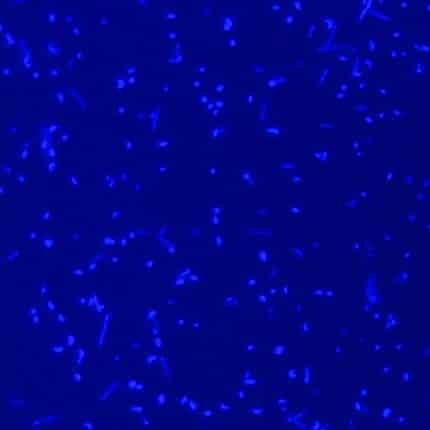
This micrograph is a representative Antarctic marine sample of bacteria and archaea that has been stained with a fluorescent dye (DAPI) that binds to DNA. A typical sample of Antarctic seawater harbors 200 to over 600 different taxa based on the diversity of 16S rRNA gene sequences. Only a small fraction of this diversity, < 1%, has been cultivated, or matches sequences of cultivated bacteria and archaea in publicly accessible databases. Through developing a nomenclature system that represents the uncultivated majority, a path for communicating diversity will benefit particularly, those microbial scientists working in natural, bio-engineered, and host-associated ecosystems.
Credit: Alison Murray/DRI.
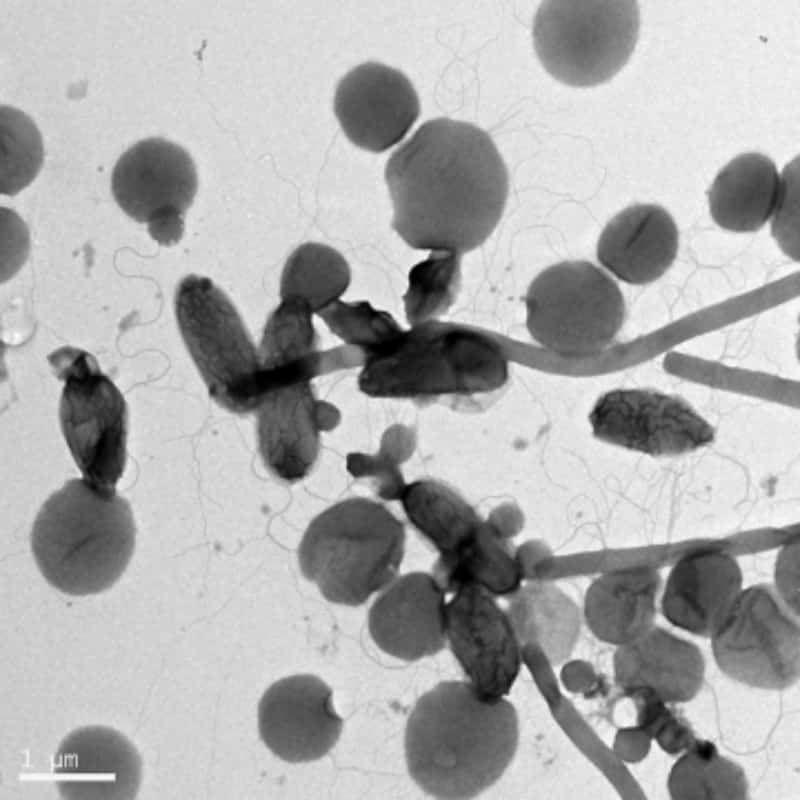
A proposed update to the International Code of Nomenclature of Prokaryotes would allow scientists to assign official names to uncultivated species of Bacteria and Archaea, such as the specimens shown in this enrichment culture of heat-loving Bacteria and Archaea from a hot spring.
Credit: Anna-Louise Reysenbach.
“It sets the framework for a path forward to provide a structured way to communicate the vast untapped biodiversity of the microbial world within the scientific community and across the public domain” said Anna-Louise Reysenbach, Ph.D., Professor of Biology at Portland State University. “That’s why this change is so important.”
The article and proposed plans are the culmination of a series of workshops that were funded by the National Science Foundation. The next step, says Murray, is to figure out an implementation strategy for moving forward with one of the two proposed plans, while engaging the many microbiologists who contributed to this consensus statement and others around the world who want to help see this change enacted. So far, many have been eager to participate.
“This is an exciting field to be in right now because we’re describing diversity of life on Earth and uncovering new phyla just like scientists were back in the 1800s when they were still discovering larger organisms,” Murray said. “Lots of paradigms have been changing in how we understand the way the world works, and how much diversity is out there – and this is another change that needs to be made. We’re going to need to change it or we’re going to live in chaos.”
“Lots of paradigms have been changing in how we understand the way the world works, and how much diversity is out there – and this is another change that needs to be made. We’re going to need to change it or we’re going to live in chaos.”
Additional information
This project was supported by the National Science Foundation. Additional authors included DRI’s Duane Moser, Ph.D.
To view the full text of the aricle “Roadmap for naming uncultivated Archaea and Bacteria” in Nature Microbiology, please visit: https://www.nature.com/articles/s41564-020-0733-x
For more information on lead author Alison Murray, Ph.D. and her research, please visit: https://www-dev.dri.edu/alison-murray-research/
###
About the Desert Research Institute
The Desert Research Institute (DRI) is a recognized world leader in basic and applied interdisciplinary research. Committed to scientific excellence and integrity, DRI faculty, students, and staff have developed scientific knowledge and innovative technologies in research projects around the globe. Since 1959, DRI’s research has advanced scientific knowledge, supported Nevada’s diversifying economy, provided science-based educational opportunities, and informed policy makers, business leaders, and community members. With campuses in Reno and Las Vegas, DRI serves as the non-profit research arm of the Nevada System of Higher Education. For more information, please visit www.dri.edu.
Media Contact
Kelsey Fitzgerald
Science Writer, Desert Research Institute
775-741-0496
Kelsey.Fitzgerald@www-dev.dri.edu
@DRIScience
